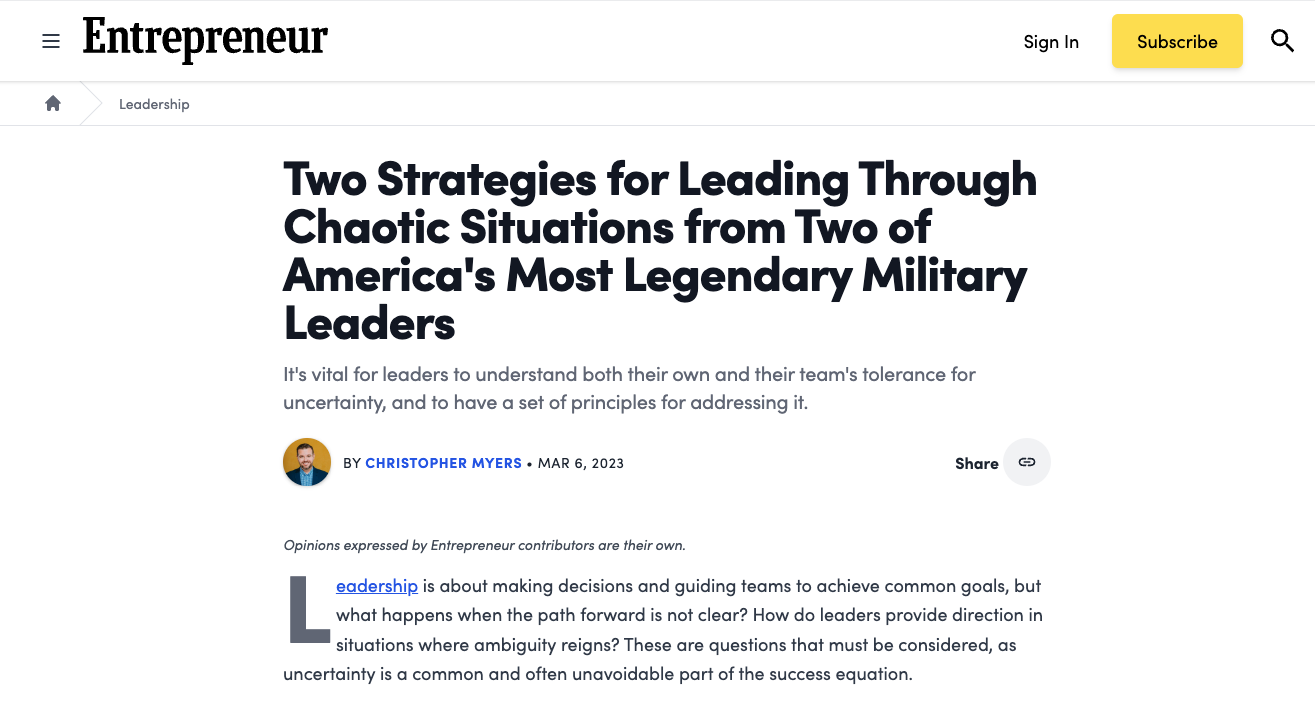Two Strategies for Leading Through Chaotic Situations from Two of America's Most Legendary Military Leaders
Guest Article Featured on Entrepreneur Magazine
Leadership is about making decisions and guiding teams to achieve common goals, but what happens when the path forward is not clear? How do leaders provide direction in situations where ambiguity reigns? These are questions that must be considered, as uncertainty is a common and often unavoidable part of the success equation.
What is ambiguity?
Broadly speaking, this word refers to a lack of clarity or certainty and can produce confusion or doubt, often because people offer multiple interpretations and options. In leadership, it can arise from a lack of information, conflicting goals and/or a rapidly changing environment.
The first step in navigating ambiguous situations is to understand your own tolerance for them. Some people are naturally better at handling uncertainty, while others struggle. It's additionally vital to understand the tolerance of team members, as it can greatly affect their ability to perform. To gauge this, apply techniques such as personality assessments, 360-degree feedback or by simply asking for their opinions. By understanding the tolerance of a group, you can tailor communication and provide it with the support they need to thrive.
A vicious cycle
Lack of clarity can lead to a vortex of anxiety, stagnation and finger-pointing. When people are unclear about roles, responsibilities and expectations, they could become paralyzed — they might look productive on the surface but are really treading water. And when confronted with a lack of progress, they might point back to that lack of clarity, which only perpetuates the cycle.
However, not everyone is affected in the same way. Some prefer to take a more autonomous approach — filtering ambiguity through their own goals and processes. These individuals are often more comfortable with uncertainty, as they regard it as an opportunity to exercise innovative thinking.
Want to receive more content like this?
Sign up for our small business updates.

